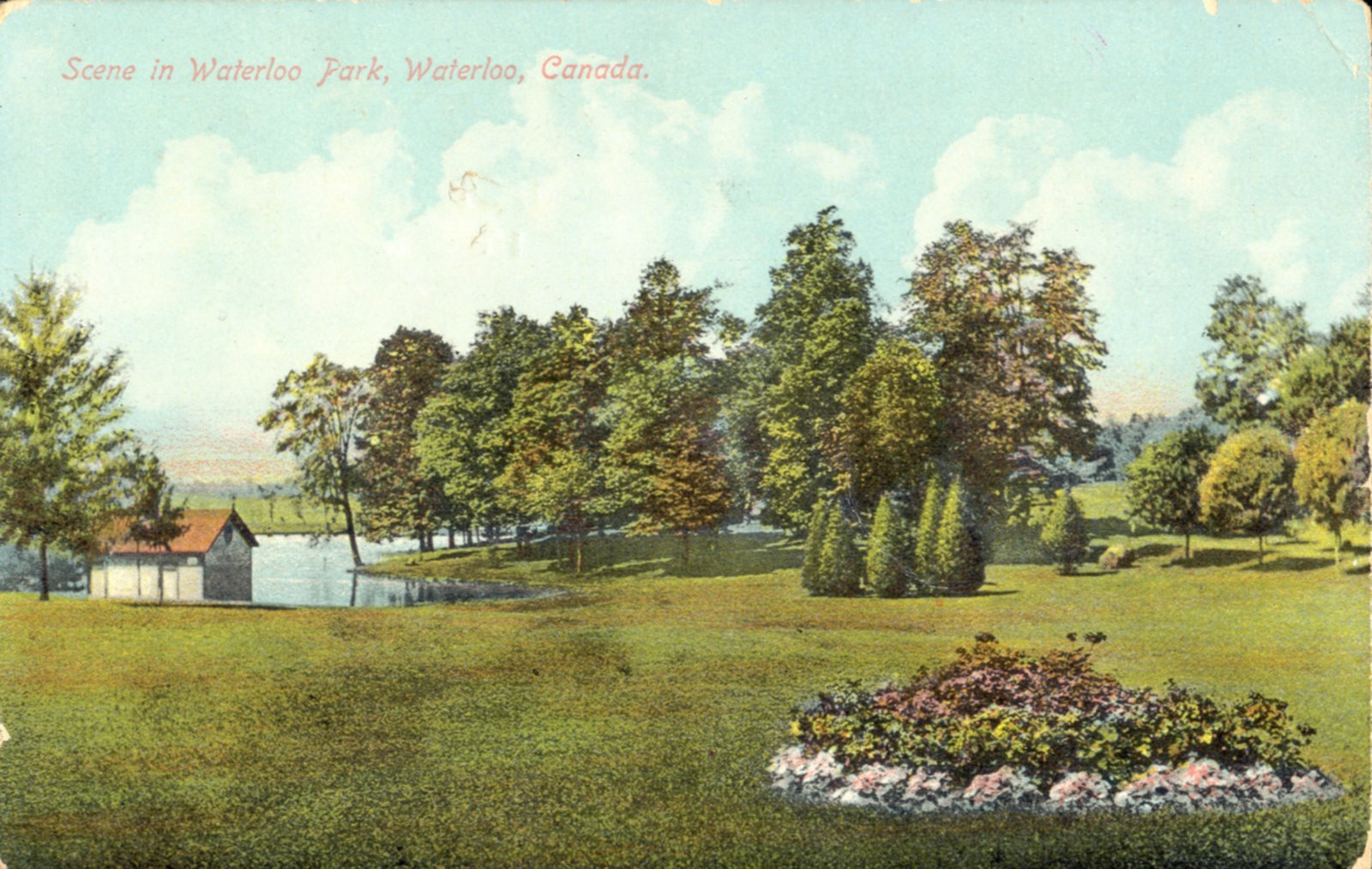
Waterloo Park: Gem of the City
Introduction: From Farm Land to Park Land
Panels
Introduction: From Farm Land to Park LandThe First Superintendent and the Formation of the Early ParkGardens in the ParkThe Park PavilionPicnics in the ParkA Little Park MusicSwimming in Silver Lake?!Silver Lake for Business and PleasureSports!Commemorative FeaturesThe Mysterious CannonsEby Farmstead ZooWaterloo's First SchoolhouseThe Grist Mill ReplicaConclusion and Sources
Before deciding on the Eby farm land, the Special Park Committee considered the grounds of Mount Hope Cemetery and the existing showground near the William and Caroline Street intersection. The showground was a large, bare field of about ten acres that was used for “sports, tournaments, races, celebrations, Saengerfests, and for a time, horse races.”2 Neither of these locations offered the appeal of the spacious Jacob Eby farm land, so the committee unanimously agreed on recommending the farm as the site of the Town’s new park.
On August 4th, 1890, R.Y. Fish, Chairman of the Special Park Committee, presented the Jacob Eby property for consideration to the Town council. The property was desirable because of its wooded grounds and central location. Additionally, the presence of a pond created the potential for boating and swimming in the park. The people of the town agreed with the committee’s recommendation, and 250 residents signed a petition of support. On September 1, 1890, there was a majority vote to move forward with the new park under the Public Parks Act of 1883.3
The park was originally called “Westside Park”, because it was on the western side of the town. Although the name formally changed to “Waterloo Park” in 1910, people continued to call it the Westside Park into the 1920s. To the north and west of the area there was farmland, and it remained that way until about the 1950s.

